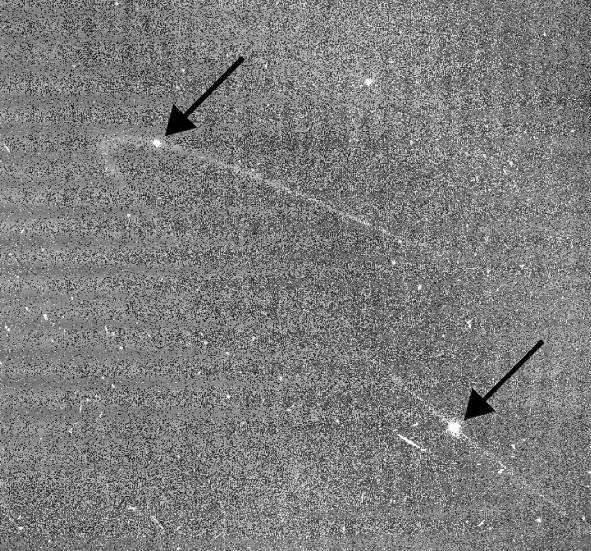Anthe and Methone Arcs

| PIA Number | PIA11102 |
|---|---|
| Language |
|
Recent Cassini images show arcs of material co-orbiting with the Saturnian moons Anthe and Methone.
Arrows indicate the positions of Anthe, at top left, and Methone, at bottom right. Micrometeoroid impacts on the moons are the likely source of the arc material.
Cassini imaging scientists believe the process that maintains the Anthe and Methone arcs is similar to that which maintains the arc in the G ring (see Rounding the Corner). The general brightness of the image (along with the faint horizontal banding pattern) results from the long exposure time of 15 seconds required to capture the extremely faint ring arc and the processing needed to enhance its visibility (which also enhances the digital background noise in the image). The image was digitally processed to remove most of the background noise. This view looks toward the un-illuminated side of the rings from about 2 degrees above the ringplane.
The image was taken in visible light with the Cassini spacecraft narrow-angle camera on Oct. 29, 2007. The view was acquired at a distance of approximately 2.3 million kilometers (1.4 million miles) from Anthe and 2.2 million kilometers (1.4 million miles) from Methone. Image scale is 14 kilometers (9 miles) per pixel on Anthe and 13 kilometers (8 miles) on Methone.
The Cassini-Huygens mission is a cooperative project of NASA, the European Space Agency and the Italian Space Agency. The Jet Propulsion Laboratory, a division of the California Institute of Technology in Pasadena, manages the mission for NASA's Science Mission Directorate, Washington, D.C. The Cassini orbiter and its two onboard cameras were designed, developed and assembled at JPL. The imaging operations center is based at the Space Science Institute in Boulder, Colo.
For more information about the Cassini-Huygens mission visit http://saturn.jpl.nasa.gov . The Cassini imaging team homepage is at http://ciclops.org .
Credit: NASA/JPL/Space Science Institute
